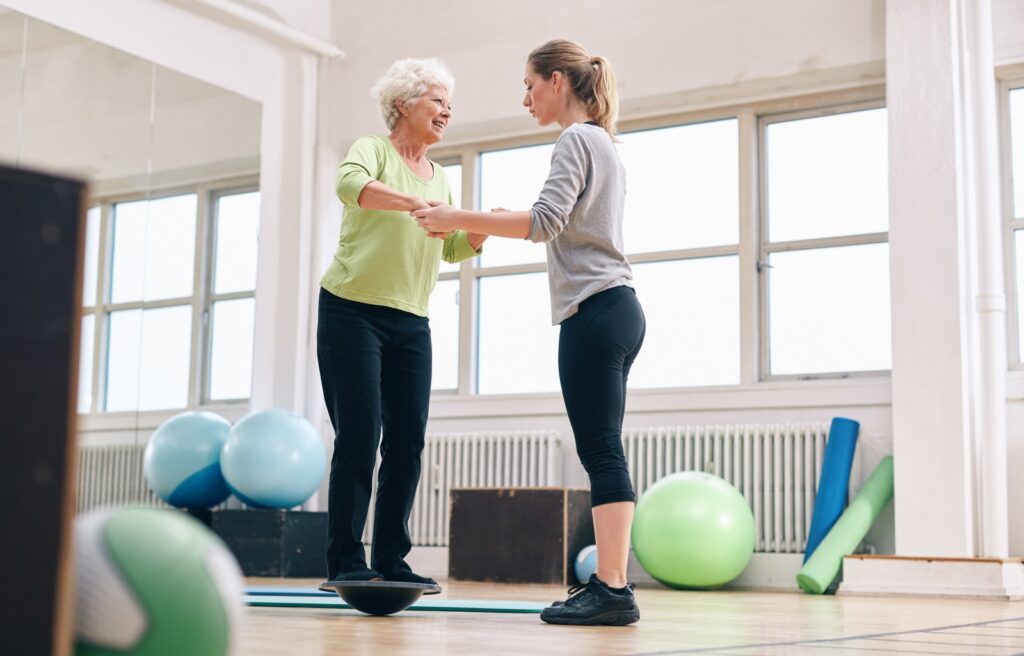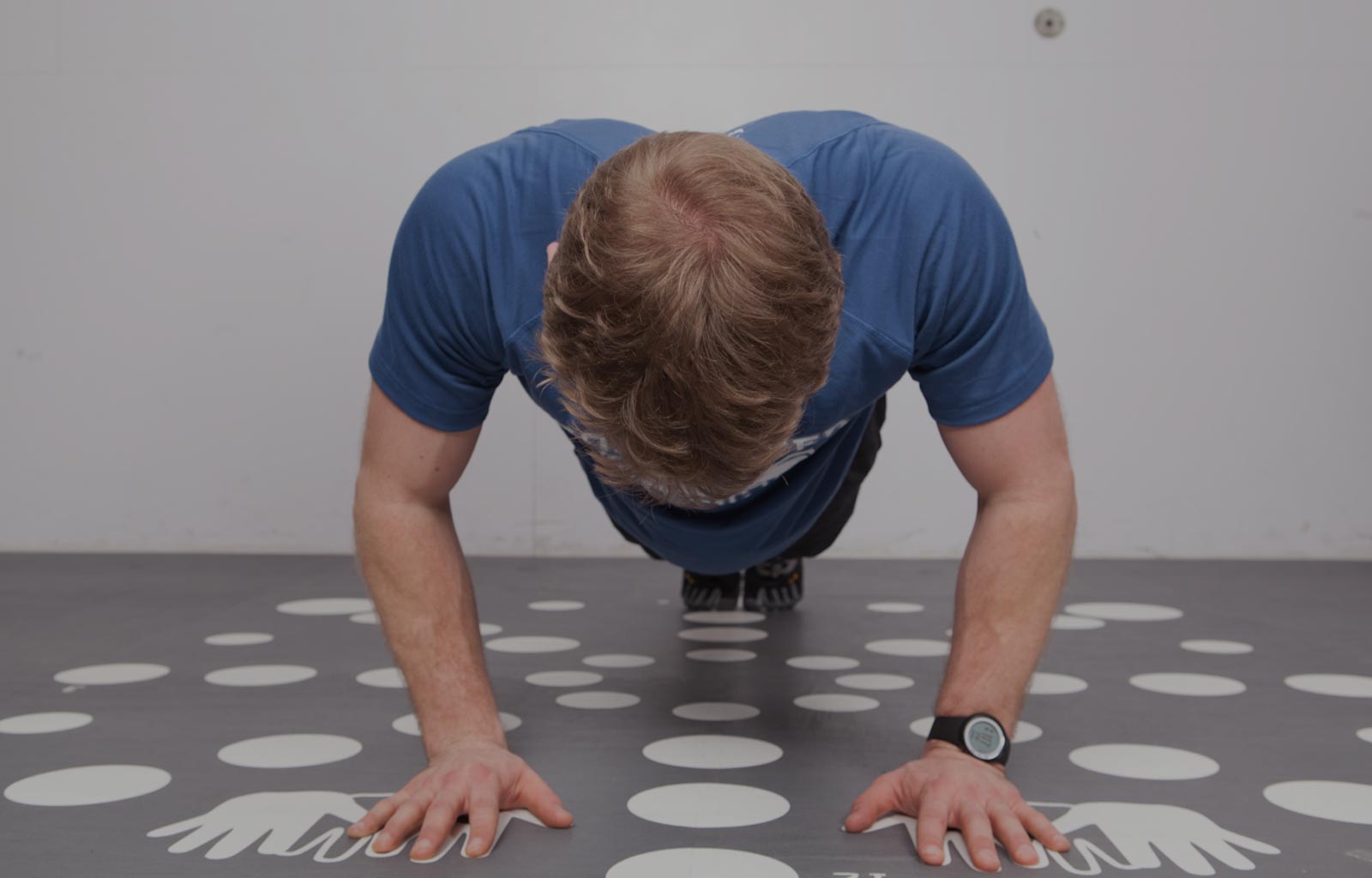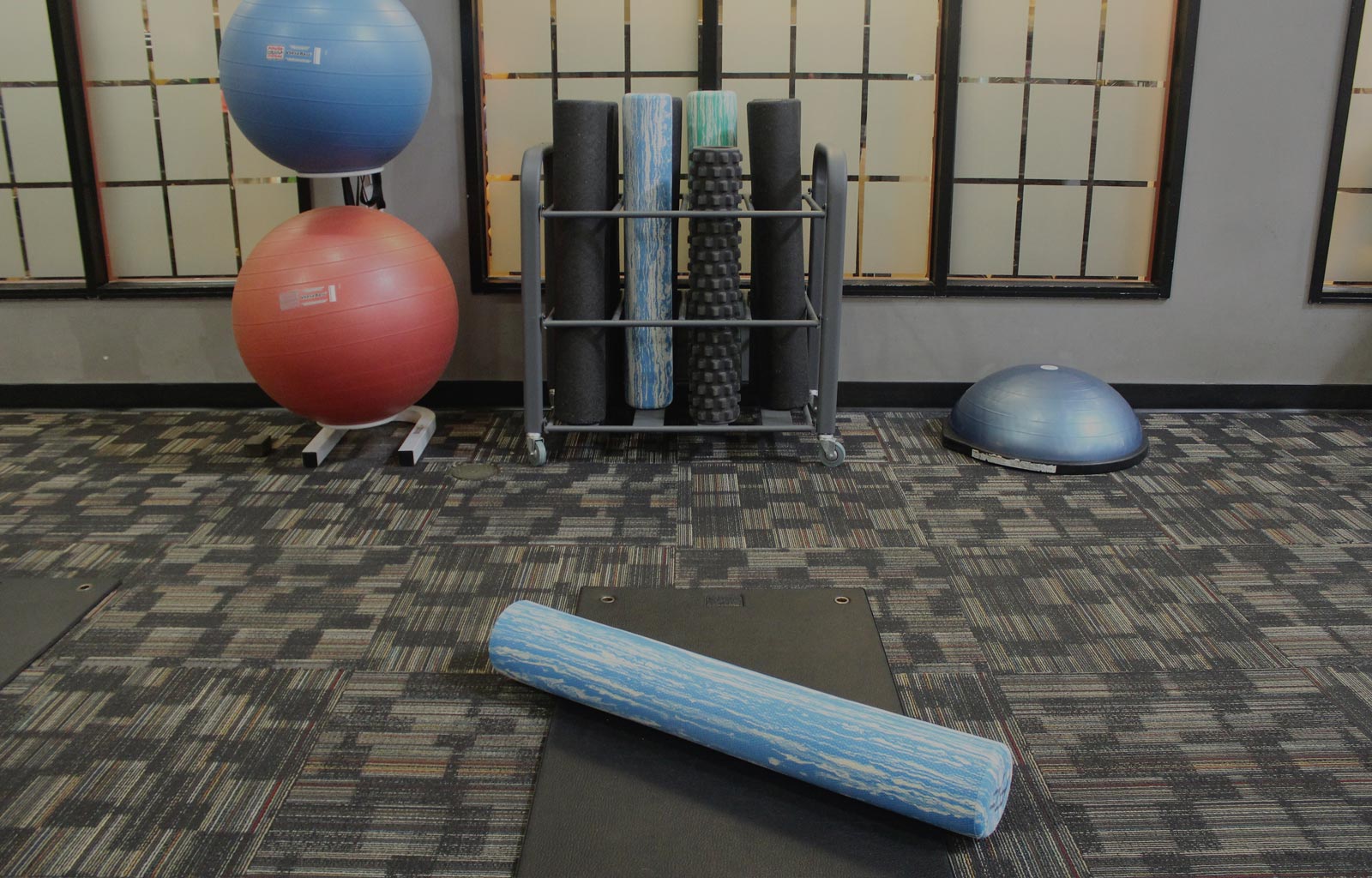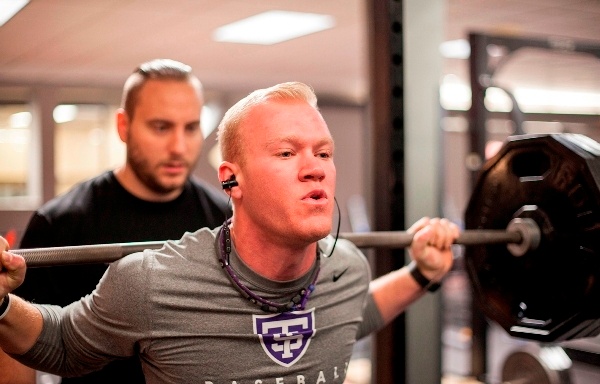Not to start off on the wrong foot – maybe that’s a bad pun in this case – but consider the following:
“According to a 2022 study published in the British Journal of Sports Medicine, people over 50 who can’t stand on one foot for 10 seconds are twice as likely to die from any cause within the next 10 years.” 1 !
We’re talking balance as in body equilibrium. Not balancing your bank account, or your diet, or even work-life balance – even though those are all important. In this case, we’re discussing stability, equilibrium – resistance to falling if you will.
Here are a few responses I’ve received when I asked some of my clients what improved balance has done for them:
- “I’m more confident that I won’t fall.”
- “I’m more aware of my body position and surroundings – reducing my risk of falling.”
- “I just feel more confident during the day. I’m more relaxed and able to do my daily activities more easily.”
Balance is so important that the American College of Sports Medicine (ACSM) recently added a fourth guideline to their long-standing guidelines of cardiovascular, strength and flexibility. These recommendations have been in place for decades. The fourth guideline is focused on “neuromotor training”:
“ACSM recommends neuromotor exercise, also known as functional fitness training, for adults two to three days a week, for 20–30 minutes per day. Neuromotor exercise should include: Motor skills: such as balance, agility, coordination, and gait…”2
There are many benefits to training for better balance, both for physical health and mental well-being. Here are some of the key advantages:
- Improved posture
Good posture can help develop balance, strength, and flexibility, which can reduce muscle pain and increase energy levels. - Better coordination
Balance training can strengthen the muscles and joints that contributbee to balance, which can lead to better movement control and improved athletic performance. - Increased muscular strength
Strengthening the muscles used for balance can help take stress off painful joints. - Improved core strength
Strong core muscles can make it easier to do day-to-day activities, and can also help you recover from an injury and prevent further injury. - Improved body awareness
Balance training can help you understand where your body is in space and how it moves. - Reaction time and fall prevention
Balance training can help you react immediately to rebalance and keep you from falling. - Reduced risk of injuries
Improved balance and coordination can help reduce your risk of injuries in the future. - Enhanced cognitive function
Balance training has been shown to help older adults enhance some cognitive functions, such as memory, focus, and even reaction time. This may be because balance training challenges the parts of the brain responsible for these functions. - Improved quality of life
Better balance can enhance one’s overall quality of life, leading to a greater ease in performing everyday activities like going up and down stairs or performing regular chores.
Balance training is a great way to invest in your overall health and well-being. It’s suitable for people of all ages and fitness levels, and there are many exercises you can do at home with minimal equipment and very simple exercises. Even as simple as standing on one leg for 10 seconds!
Our balance tends to deteriorate as we age due to many factors – several of them are in our control, some are not. Many people don’t realize that loss of strength is a contributing factor to deteriorating balance – and that even seated leg exercises can improve standing balance. For more on that subject, please come back next month as we’ll consider: “Strength Training for Improving Balance”.
References:
2. ACSM’s Exercise Testing and Prescription, 11th Edition




